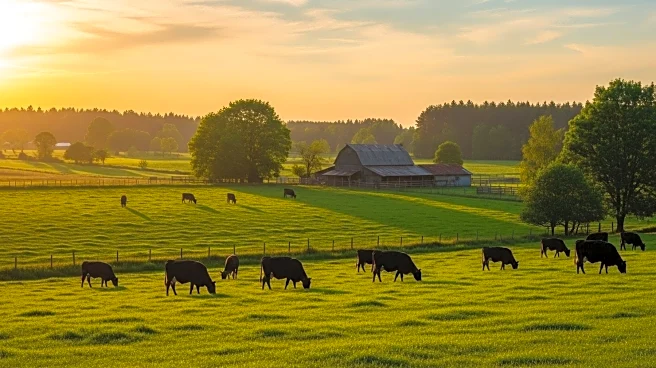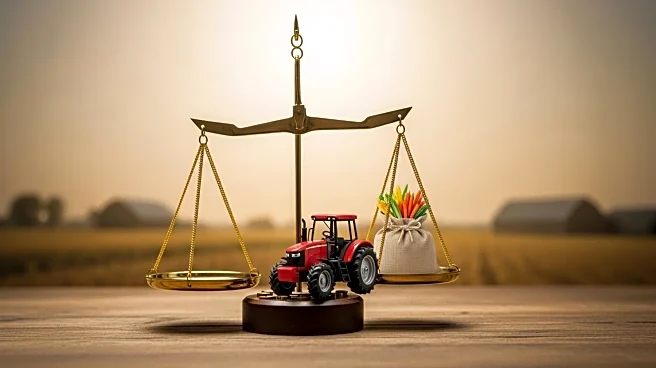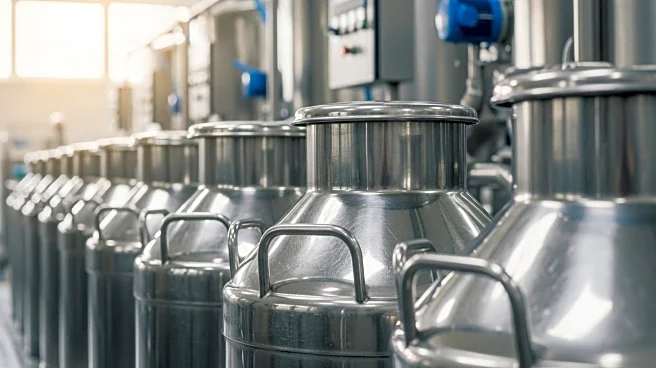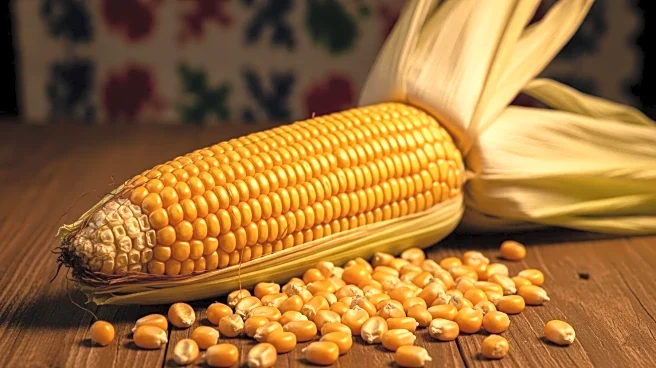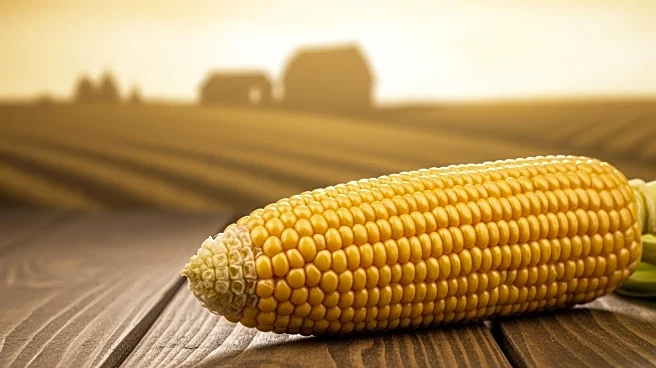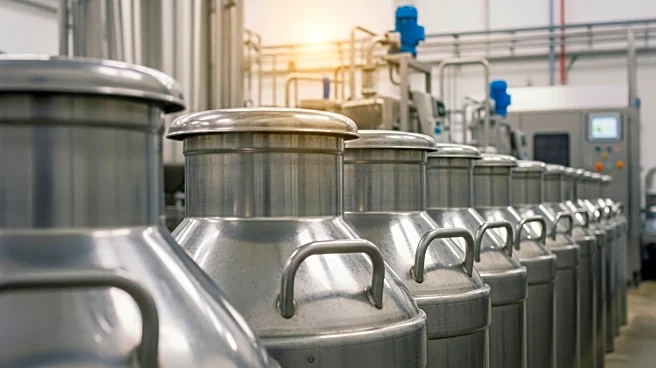What is the story about?
What's Happening?
Idaho's dairy industry has once again topped the state's agricultural revenue charts in 2024, generating $3.87 billion in milk sales, according to USDA data. This marks a 12 percent increase from 2023, although it falls short of the 2022 record of $4.28 billion. The cattle and calves sector is closely following, with a record $3.32 billion in farm-gate receipts, representing a 27 percent increase from the previous year. The USDA forecasts a 4 percent decline in national milk receipts and a 13 percent rise in cattle receipts for 2025, suggesting that the beef sector may surpass dairy as Idaho's leading agricultural commodity next year. Other notable commodities include potatoes, wheat, sugar beets, and hay, with varying revenue changes from the previous year.
Why It's Important?
The shifting dynamics in Idaho's agricultural revenue highlight the evolving landscape of the state's farming industry. The potential overtaking of dairy by the cattle sector could have significant implications for local farmers and the broader agricultural market. As cattle receipts rise, farmers may adjust their production strategies, impacting supply chains and market prices. The increase in cattle revenue also reflects broader national trends, as beef demand continues to grow. This shift could influence policy decisions and resource allocation within the state, affecting stakeholders from farmers to consumers.
What's Next?
With the USDA forecasting changes in commodity receipts, Idaho farmers may need to adapt their strategies to optimize profits. The potential rise of the cattle sector could lead to increased investment in beef production infrastructure and technology. Stakeholders, including policymakers and industry leaders, may focus on supporting this transition to ensure sustainable growth. Additionally, fluctuations in other commodity revenues, such as potatoes and wheat, may prompt diversification efforts to stabilize farm incomes.
Beyond the Headlines
The potential shift in Idaho's agricultural hierarchy could have broader implications for environmental and economic sustainability. Increased cattle production may raise concerns about land use and resource management, prompting discussions on sustainable farming practices. The evolving market dynamics could also influence cultural perceptions of Idaho's agricultural identity, as dairy has traditionally been a cornerstone of the state's farming sector.
AI Generated Content
Do you find this article useful?
